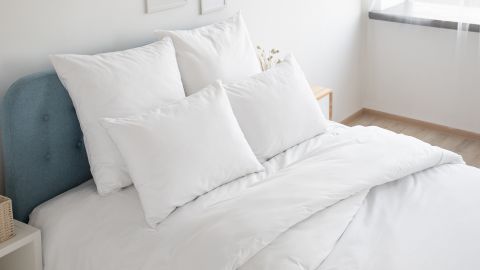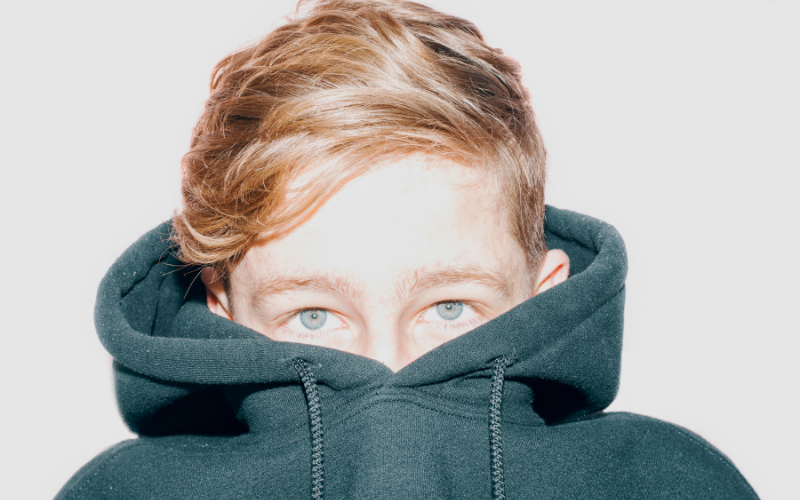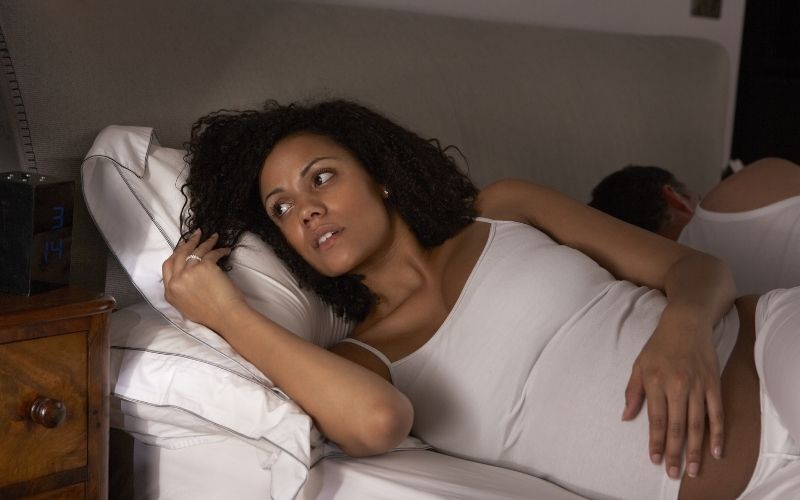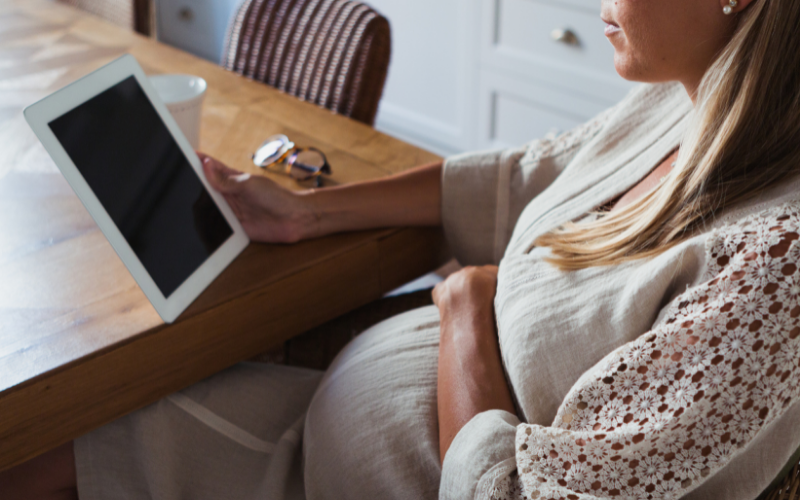All the best sleep products we tested in 2021
We thought to jumpstart the New Year we would share this exhaustive list of fantastic sleep aids. We stumbled across this article from CNN and found it shareworthy.
CNN Underscored is constantly testing products — be it coffee makers or office chairs — to find the absolute best in each respective category.
Our testing process is rigorous, consisting of hours of research (consulting experts, reading editorial reviews and perusing user ratings) to find the top products in each category. Once we settle on a testing pool, we spend weeks — if not months — testing and retesting each product multiple times in real-world settings. All this in an effort to settle on the absolute best products.
This year, we tested dozens of sleep-related products — from bedding to alarm clocks — to find the best products you need to get the rest you need.
Bedding
Down comforters

Shutterstock
Best down comforter overall: Brooklinen Down Comforter (starting at $159; brooklinen.com)
Have you ever wished you could sleep on the clouds? Well, the Brooklinen Down Comforter is the closest thing to that. From the moment we took it out of the packaging, we had a hunch that this would be a favorite. And we were right.
The comforter comes in three different weight options: lightweight, all-season and ultra warm. We tested the all-season comforter, and despite it being the middle of winter with temperatures dropping indoors and out, we found it to perfectly balance snuggly warmth with breathability. Though on the heavier end of the spectrum (it boasts a 700 fill power and baffle box design), we never found the comforter to trap too much heat or cause nighttime sweating. The comforter, with its 100% cotton sateen shell, was one of the softest we tested — and the one we kept coming back to cuddle into most nights.
Best down comforter for warmth: The Company Store Legends Hotel Alberta Down Comforter (starting at $299; thecompanystore.com)
When it comes to warmth and coziness, the Legends Hotel Alberta Down Comforter from The Company Store is unrivaled.
Full disclosure: This comforter is for truly frosty climates, or especially cold sleepers. Though available in three different weights — light, medium and extra, all of which sport a baffle box construction — we tested and recommend the extra warmth option (which has a 650 fill power). While our main tester, who tends to sleep hot, found this lofty comforter slightly too heavy to sleep with throughout the night, a cold-sleeping family member absolutely loved the warmth the Legends Hotel Alberta Down Comforter provided.
Best down-alternative comforter: Buffy Cloud Comforter (starting at $109.65; buffy.co)
The Buffy Cloud Comforter was like no other comforter we tested. This down-alternative comforter was by far the best alternative version we tested — and the only one we’d recommend, as the other down alternatives we tested lacked in both quality of construction and comfort.
Although this was a new type of material for us — as we typically sleep with a down comforter in our nontesting days — we thought the fabric was very soft and lightweight but still heavy enough to keep us warm throughout the night. The comforter was also very quiet, emitting no crinkling sounds when shifting sleeping positions.
• Read more from our testing of comforters here.
Flannel sheets

L.L.Bean
Best overall flannel sheets: Garnet Hill Hemstitched Supima Flannel Bedding ($197 for a queen set; garnethill.com)
Luxurious without feeling overly thick or too weighty, Garnet Hill offers a delectably comfortable flannel sheet at a mid-to-high end price point, starting at $197 for a queen set (which includes two pillowcases, a fitted sheet and a flat sheet). These flannels come in lots of varieties of color and size, and instill confidence you’re getting a quality product that’ll last for years to come.
Best lighter-weight option: West Elm Organic Flannel Solid Sheet Set ($170 for a queen set; westelm.com)
Very close to our overall favorite because it is both supremely cozy and the most lightweight of all the sets we tested is West Elm’s organic flannel sheet, which starts at $170 for a queen set. These sheets didn’t come out on top because they’re available in only two colors and cannot be ordered a la carte like Garnet Hill’s sheets.
Best cold-weather sheets: L.L.Bean Ultrasoft Comfort Flannel Sheet Set ($119 for a queen set; llbean.com)
If you’re sleeping in really cold weather and you want to feel positively bundled, L.L.Bean makes a weighty flannel sheet for you — at a competitive price point for the level of craftsmanship therein at $119 for a queen set.
Best bargain: Pinzon Signature Cotton Heavyweight Velvet Flannel Sheet Set ($70.99 for a queen set; amazon.com)
Also delivering an excellent and very warm night of sleep, Pinzon by Amazon turns out a substantial flannel sheet at just $70.99 for a queen set. That’s half the price of some of the other higher-end brands, but you won’t feel like you’re sacrificing quality.
• Read more from our testing of flannel sheets here.
Linen sheets

iStock
Best linen sheets overall: Parachute Linen Sheet Set (starting at $149; parachute.com)
Making the bed with these sheets was effortless. We’ve struggled with tight-fitting cotton sheets before, wondering why bed-making must be truly laborious. The Parachute linens were roomy but not baggy. They fit the bed comfortably, like a lovingly worn-in linen button-down. On the summer night we first tested these, the sheets were soft but also firm. If this sounds uncomfortable, it was the converse: cool, light and luxurious. Our first mental note was that we felt like we were sleeping on a cloud.
Runner-up linen sheets: Citizenry (starting at $230; the-citizenry.com)
These are a sturdier, thicker option than some of the ones we tested, and thus feel like they’ll transition well into colder weather. Without an air conditioner unit blasting directly onto us in the heat of summer, these sheets almost felt heavy — so they wouldn’t be our first recommendation for hot sleepers. In a more temperature-controlled room, though, they felt so cozy we didn’t want to leave the bed.
After even the first washing, these beauties softened significantly, rendering them even more snuggly.
Softest linen sheets: Brooklinen (starting at $269; brooklinen.com)
These sheets are the definition of soft. So comfortable. So enveloping. So melty. (They’re crafted from 100% French and Belgian linen, made in Portugal, and Oeko-Tex-certified for chemical safety.) We sort of dissolved into them in a very pleasing way. They felt like they had been washed and rewashed dozens of times, already achieving that texture, and from a sleeping experience alone, they were our favorite.
Best affordable linen sheets: Amazon Simple&Opulence 100% Washed Linen Sheet Set (starting at $114; amazon.com)
For less than $150, this is a very satisfying set of linens. While the sheets were slightly less luxurious-feeling and special than some of the other sets with special details or touches, these rank as high-quality, durable bedding more than worth their weight.
• Read more from our testing of linen sheets here.
Duvet covers

Boll & Branch
Best duvet cover overall: Casper Sateen Duvet Cover (starting at $99; casper.com)
Hands down, the Casper Sateen Duvet Cover was the best duvet cover we tested. From the moment we took it out of the bag, we knew this one would be a winner. Between the zipper closure at the bottom to the hidden holes on the corners to more easily attach the cover to the duvet, the design of this duvet cover blew the others we tested out of the water — all for a middle-of-the-road price tag.
Best duvet cover for warmth: L.L.Bean Ultrasoft Comfort Flannel Comforter Cover (starting at $64.95; llbean.com)
For the colder months, or for those looking to outfit their cozy cabin, the L.L.Bean Ultrasoft Comfort Flannel Comforter Cover will give you the utmost softest feel while adding some warmth, as it was made from the thickest material we tested. And at less than $100 for a king-size cover, its quality and comfort surpass the price.
Best luxury duvet cover: Boll & Branch Signature Eyelet Duvet Cover Set (starting at $358; bollandbranch.com)
Want something a little more than plain Jane when it comes to design? If so, the Boll & Branch Signature Eyelet Duvet Cover is the perfect middle ground: It’s elegant but adds some design elements with borders. A full overlay also covers the bottom buttons, completing the design border. The quality is superb, with all stitching, ties and buttons fully secure. Note that this duvet cover isn’t cheap — in fact, it’s the most expensive of all we tested — but it’s one of the few luxury brands that also includes shams, making it easy to ensure that your bedding will match.
Best affordable duvet cover: Mellanni Microfiber (starting at $27; amazon.com)
If you love walking into a hotel room and getting comfy on those sleek-looking beds, you’ll love the Mellanni Microfiber Duvet Cover. With hidden button covers and matching shams and pillows, this comfortable duvet cover will lend an elegant vibe to your bedroom — at just around $30 in total for a five-piece set, an absolute steal in our book.
• Read more from our testing of duvet covers here.
Silk pillowcases

Amazon
Best silk pillowcase overall: Fishers Finery 25mm 100% Pure Mulberry Silk Pillowcase ($49.99; amazon.com)
Fishers Finery — made from the finest silk available — felt luxuriously silky, fit our pillows perfectly, offered beautiful nights of sleep and were easy to wash and dry both by hand and in the machine.
Best affordable silk pillowcase: MYK Silk Natural Silk Pillowcase with Cotton Underside ($23.99; amazon.com)
The MYK Silk Natural Silk Pillowcase, featuring lovely silk on one side and white cotton on the other, offered a good fit, restful sleep and for about half the price of the Fishers Finery option — though it’s notably less luxurious-feeling.
Best luxury silk pillowcase: Lunya Washable Silk Pillowcase ($74; lunya.co)
We couldn’t get enough sleeps on the Lunya Washable Silk Pillowcase. Also a silk on one side, cotton on the other option, Lunya’s silk surface case was the most lavish to the touch, and design details made it feel significantly elevated.
• Read more from our testing of silk pillowcases here.
Alarm clocks

Kai Burkhardt/CNN
Best alarm clock overall: Jall Wooden Digital Alarm Clock ($25; amazon.com)
The Jall Wooden Digital Alarm Clock looks great and has everything you need in an alarm clock. It’s simple to set, read, and use, and can wake you dependably with multiple alarms.
Runner-up: DreamSky Compact Digital Alarm Clock ($18.99; amazon.com)
An easy-to-use alarm clock without any bells and whistles to get in the way, the DreamSky is simple, durable, and highly readable, and will get you out of bed in the morning with a loud beep that isn’t too startling.
Best sunrise alarm clock (and best with radio): Philips Wake-Up Light HF3520 ($99.99; amazon.com)
Able to wake you gently with lights that gradually brighten to mimic the dawn, the Philips Wake-Up Light HF3520 is a great sunrise alarm clock and one of the best all-around alarm clocks we tested, with intuitive programming, a wide range of alarm tones and a radio.
Best alarm clock for heavy sleepers: Sonic Bomb Dual Extra-Loud Alarm Clock With Bed Shaker ($32.07, originally $52.95; amazon.com)
With the most intense, abrasive sound of any alarm we tested, a strobe light, and a vibrating puck that you place under your pillow, the Sonic Bomb can awaken even the heaviest sleepers
• Read more from our testing of alarm clocks here.
White noise machines

Benjamin Levin/CNN
Best sound machine overall: Sound+Sleep Mini ($65.63; amazon.com)
The Sound+Sleep Mini contains 48 different sounds, like rain, brooks, fans, ocean sounds, white noise, and many more. The other devices we tested feature some of these soundscapes, but the Mini is one of the only one that has them all. .
The upgrade pick: Hatch Restore ($129.99; amazon.com)
While our overall pick is a classic sound machine, the Hatch Restore resides packs extra features like a large color-changing light on the front, a digital clock display and routines to help you wind down and fall asleep easier.
• Read more from our testing of white noise machines here.
Sleep mask

Amazon
Best sleep mask overall: Mavogel Cotton Sleep Eye Mask ($9.98; amazon.com)
Let’s get right to our favorite thing about this mask: the adjustable nose wire. Similar to the nose wire in the masks that we have become all too familiar with in the last year, the Mavogel’s nose wire lets you get the perfect light-blocking, lock-in-place fit. Many masks had a slight crack of light around the nose bridge. This mask, though, formed the best seal around the edges, blocking out more light than any other mask we tested.






